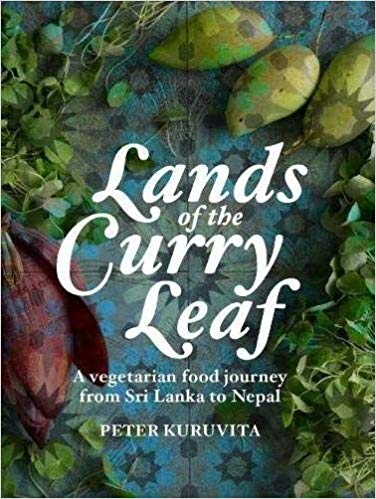To anyone who says vegetarian food is boring, offence taken! I’m not a vegetarian. I love meat, but raised by a vegetarian mother, I grew up with a healthy appreciation for vegetables and the various ways in which you can tease out their flavours. In most cases, leaving vegetables alone and using a light hand with spices and herbs does the trick. I’m constantly on the lookout for vegetarian recipes to experiment with on days I don’t want to eat a heavy, meaty meal, but still want something different. So, when I came across Australia-based chef Peter Kuruvita’s vegetarian cookbook Lands of the Curry Leaf, I was intrigued. Given his heritage, his mother is Austrian and father Sri Lankan, most (including me) would make the mistake of assuming that meat and seafood would overwhelm his view of what makes a good meal, and yet, Kuruvita dedicated his latest book, published last year, to all plant and dairy based foods—vegetables, grains, lentils, sauces, cheesy curries.
The book itself is a thing of beauty. Exquisitely produced, it draws your eye with its front cover that captures the spirit of a summer’s day in South Asia. It is a pleasing green colour, featuring a raw, green mango clearly waiting to be made into aam panna and edible nasturtium leaves bursting with peppery, umami goodness. The photographs within too are expertly created, showcasing the hero ingredients of the dish next to bowls piled high with pilaf (a rice dish) or gundruk (a Nepalese fermented vegetable dish), among others.
For Kuruvita, Lands of the Curry Leaf is as much a personal exercise as it is a culinary one. He understands that the best thing about one’s favourite food, more than its taste, is the memory associated with it. So, in his books, he first lays down his life’s history for his readers. ‘My earliest food memory is of my father feeding me with his fingers. Little balls of rice and dhal delivered on rough, cracked hands that smelt and tasted of diesel from his engineering workshop,’ he writes in the introduction. We get to know Kuruvita and his family, gain insight into his inspiration and then move on to his food. Accompanied with black and white, sepia-toned photographs, the kind that inspire instant nostalgia, he tells us about all the things that make him tick—food, travel, his mother’s diary in which she documented their ‘intrigue and natural interest in food’. His love for vegetables, he writes, came from watching his grandmother.

